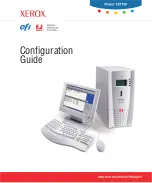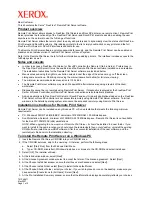
Chapter 27: System Report Management
MAXCS ACC 6.7 Administration Manual 359
The difference between the
Current Resource Statistics
window and the
IP
Cumulative Traffic Statistics
window is that the former shows figures only for the
active
call (Current Traffic) on a particular IP trunk of the local MAXCS system while the
other window shows figures for
all
calls combined (cumulative traffic).
Resetting Cumulative Statistics
You can reset the
IP Cumulative Traffic Statistics
by clicking the
Reset
button. Also,
this window automatically resets all fields to
0
when the MAXCS system is shut down
and restarted. Statistics gathered before the reset are not saved.
Using SNMP
SNMP (Simple Network Management Protocol) is used in network management systems
to monitor network-attached devices for conditions that warrant administrative
attention.
This MAXCS SNMP configuration, used with a third-party management console (see next
section), helps you see the MAXCS status, so you can use MAXCS more securely. Using
an SNMPv3 agent, MAXCS sends SNMP traps to the management console when alarming
conditions are detected.
Note:
The SNMP traps are sent by the Altigen services SPServ (Softswitch up, Softswitch
down traps), AltiKeep (warm start trap), and AltiServ (all other traps), so those
services need to be started, or the traps will not be sent.
SNMP Management Console
To use SNMP, you need an SNMP management console that is SNMPv3-supported for
receiving and collection. If you’re not already using one, AltiGen recommends MG-Soft
Trap Ringer Professional Edition, available from MGSoft Corporation, at http://www.mg-
soft.com/tringer.html.
You can get help about how to configure an SNMP User Account and Management
Console Port in that product’s Help system.
Note:
AltiGen’s IANA Private Enterprise Number is 13679.
Configuring MAXCS for SNMP
To configure MAXCS for SNMP, select
Report > SNMP Configuration
.
Average Jitter
Average length of delay per voice packet in milliseconds. This
figure should stay under 100 milliseconds. A higher figure
indicates a longer average delay. This number can be used to
measure the quality of service on the network that connects
the source and destination sites.
Parameter
Description
Summary of Contents for ACC 6.7
Page 16: ...2 MAXCS ACC 6 7 Administration Manual ...
Page 44: ...Chapter 2 System Requirements and Installation 30 MAXCS ACC 6 7 Administration Manual ...
Page 56: ...Chapter 3 Getting Around MaxAdministrator 42 MAXCS ACC 6 7 Administration Manual ...
Page 98: ...Chapter 6 Voice Mail Configuration 84 MAXCS ACC 6 7 Administration Manual ...
Page 108: ...Chapter 7 Auto Attendant Configuration 94 MAXCS ACC 6 7 Administration Manual ...
Page 124: ...Chapter 9 Call Recording Configuration 110 MAXCS ACC 6 7 Administration Manual ...
Page 128: ...Chapter 10 Application Extension Configuration 114 MAXCS ACC 6 7 Administration Manual ...
Page 180: ...Chapter 12 Trunk Configuration 166 MAXCS ACC 6 7 Administration Manual ...
Page 186: ...Chapter 13 In Call Routing Configuration 172 MAXCS ACC 6 7 Administration Manual ...
Page 234: ...Chapter 16 Setting Up IP Extensions 220 MAXCS ACC 6 7 Administration Manual ...
Page 246: ...Chapter 17 AltiGen IP Phone Configuration 232 MAXCS ACC 6 7 Administration Manual ...
Page 256: ...Chapter 18 Mobile Extension Configuration 242 MAXCS ACC 6 7 Administration Manual ...
Page 270: ...Chapter 19 Hunt Group Configuration 256 MAXCS ACC 6 7 Administration Manual ...
Page 274: ...Chapter 20 Paging Group Configuration 260 MAXCS ACC 6 7 Administration Manual ...
Page 370: ...Chapter 26 Redundancy Configuration 356 MAXCS ACC 6 7 Administration Manual ...
Page 404: ...Chapter 29 TAPI Integration 390 MAXCS ACC 6 7 Administration Manual ...
Page 426: ...Chapter 30 Tools and Applications 412 MAXCS ACC 6 7 Administration Manual ...
Page 448: ...434 MAXCS ACC 6 7 Administration Manual ...
















































